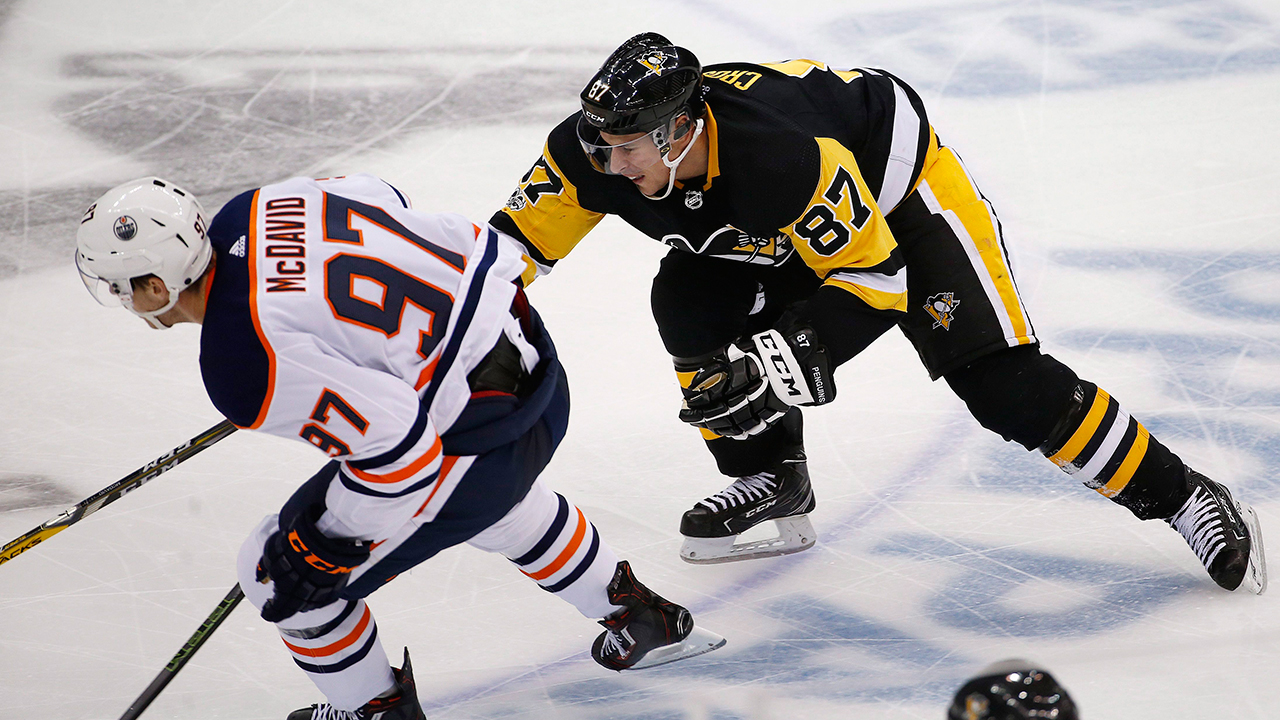PITTSBURGH — As Connor McDavid and Sidney Crosby get set for another of their biannual meetings tonight in Pittsburgh, they can nod at each other over the opening faceoff, knowing that — finally — the shooters are starting to take back the National Hockey League.
McDavid is on his way to a career season, while Crosby is on pace for his most productive season in five years. After more than 25 years of goalie equipment growing to the point of the absurd, the NHL has finally swung the pendulum back towards the skaters.
It’s only incremental, but as the league’s top two players meet on Wednesday in Pittsburgh, the scoring needle is pointing up and save percentages have taken a hit.
Through roughly two-thirds of the 2018-19 schedule, teams are combining for more than six goals a game, or 3.06 goals per game each. The last time NHL teams averaged more than three goals per game was the first year back from the “lost season” lockout, in 2005-06.
[snippet id=4269767]
Historically, goal scoring fades a bit in the final third of the season as teams buckle down defensively down the stretch. If the NHL stays above 2.97 goals per game, however, it will mark the fourth straight season that goal scoring has been up from the prior season.
Heading into Tuesday night’s slate of games, only Alexander Ovechkin was on schedule to score more than 50 goals, comfortably scoring at a 56-goal pace. On Dec. 12 there were 11 players on a 50-goal pace, but today there are still a handful who are a two- or three-goal night away from re-joining that club.
Jeff Skinner and John Tavares are both on pace for 49. Patrick Kane and Leon Draisaitl are on pace for 48. Brayden Point is on pace for 47.
We haven’t seen a 50-goal scorer since Ovechkin hit the mark right on the nose four seasons ago, and since 2010 only four players have posted a 50-goal season. It’s a dying art, and that post-lockout season was the last time five or more players notched half-a-hundred in a single season.
But production is up among the top point getters. There were three 100-point players last season: McDavid (108), Claude Giroux (102) and Nikita Kucherov (100). This season, there are seven players on a 100-point pace, heading into the final third of the season.
It starts with Kucherov, who is on pace for a career-high 123 points, and winds down through McDavid (121), Kane (119), Mikko Rantanen and Johnny Gaudreau (112), Nathan MacKinnon (110), to Brayden Point (101). Blake Wheeler is on schedule for 98 points, as is Mitch Marner and Draisaitl.
This stat might be the brightest light for offensive hockey, because it appears to show that the stars are being allowed to ply their trade more often over the course of a full season. In 2014-15, Jamie Benn won the Art Ross Trophy with just 87 points, and you have to go all the way back to 2006-07 to find five or more 100-point scorers in the same season.
This season, McDavid has 31-50-81 thru 55 Oilers games. That puts him on pace for a seasonal line of 46-75-121, which would be career highs in all three categories.
Crosby, meanwhile, has 24-41-65 through 56 Penguins games. He is on pace for 35-60-95, his most productive season in five years.
It’s not really about how much scoring is up, but more so for those who prefer to see a little more offence in their hockey, the fact it is trending in the right direction. The trend isn’t due to shots on goal, which are down a half a shot per game, or power plays — 80.06 per cent this season compared to 79.82 per cent last campaign.
We would then surmise that the most influential change is the continued decrease in the size of goalie equipment, the runaway train that has finally been brought back under control. The NHL managed to further reduce the size of the goalies’ leg pads two years ago, and this season the league went after chest and arm protectors. It’s simple math that the smaller goalie makes less saves, and taking a look at save percentages around the league, that math is borne out.
The average save percentage around the league this season is .908 — a 10-year low, down four points from last season’s .912. If teams are shooting less and scoring more, that has to be a sign that the changes in goal are beginning to bear fruit.
Finally, it’s the shooters’ turn.
[relatedlinks]









